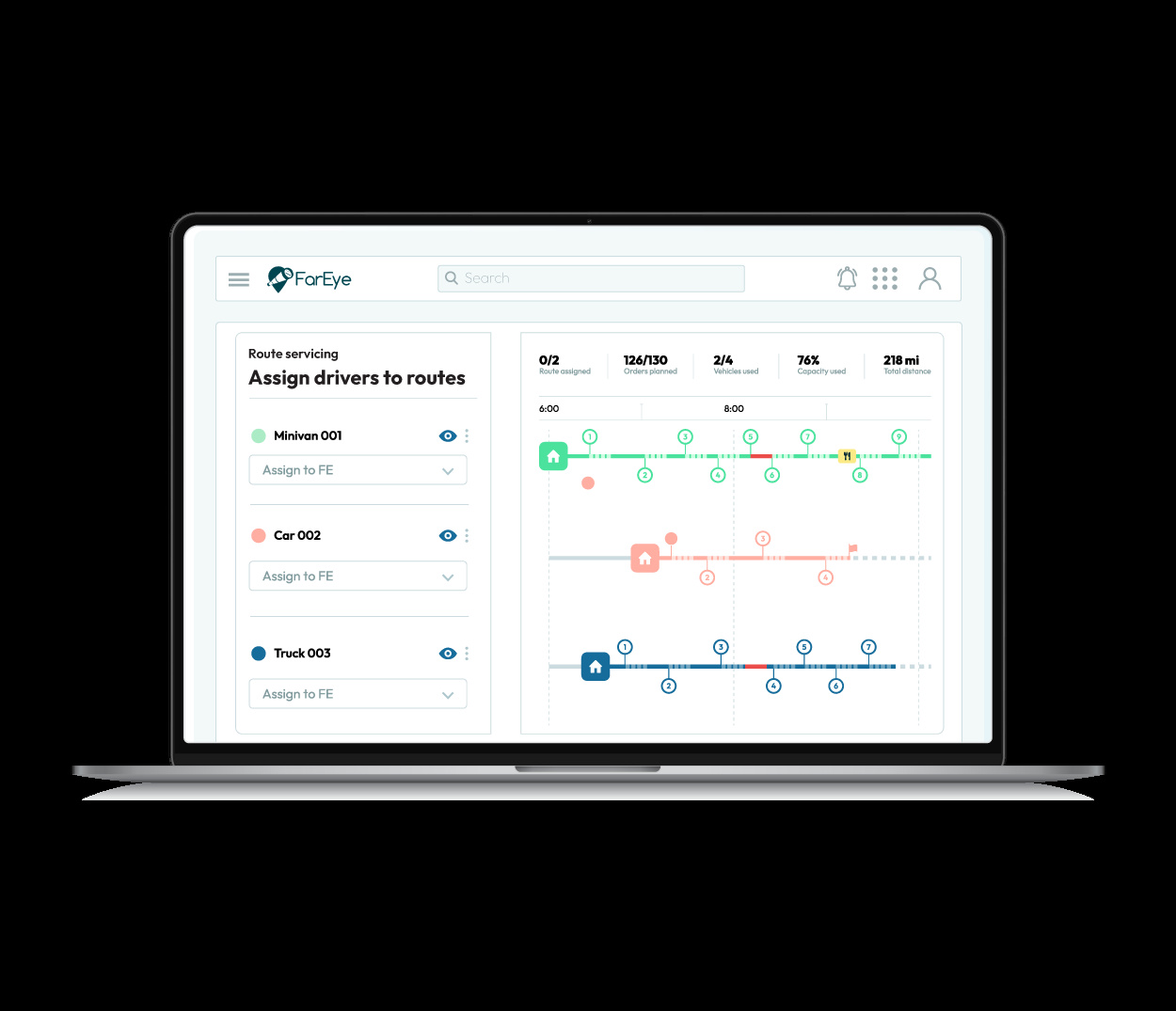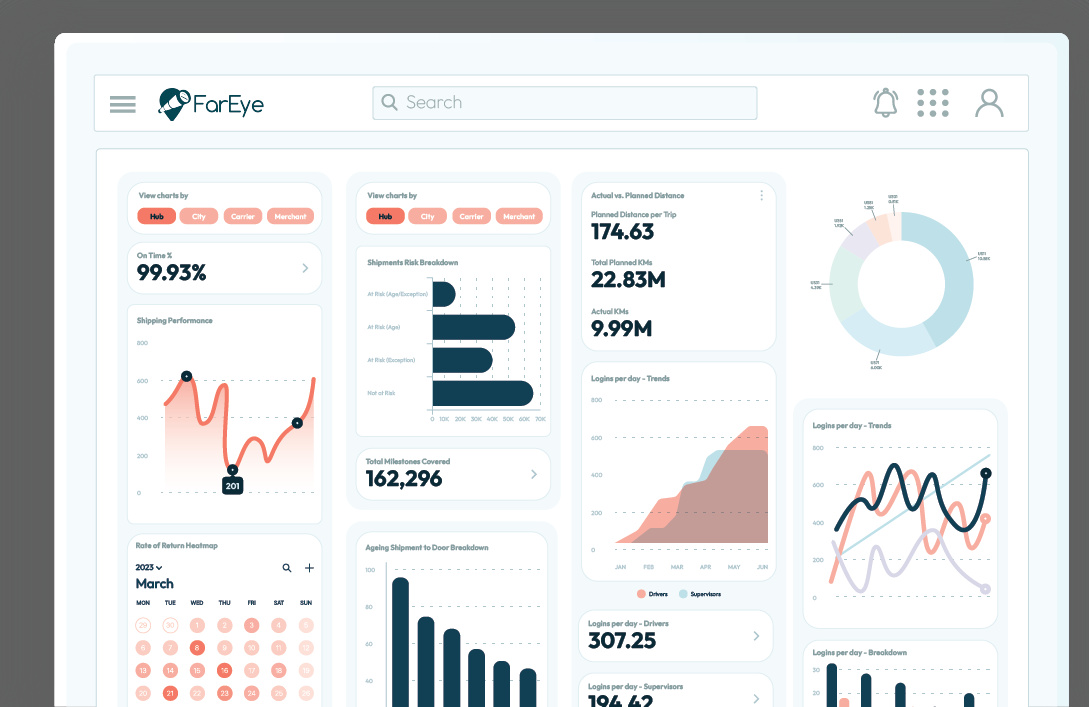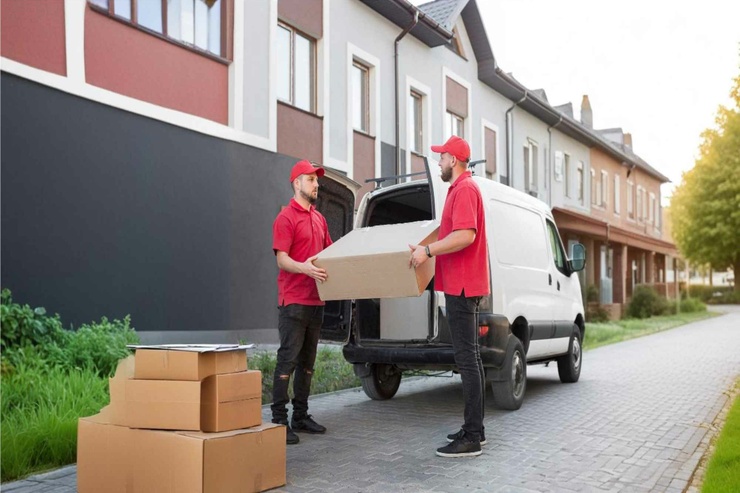- Last-Mile
The Role of AI in Improving Last Mile Delivery
Nearly 80% of American consumers believe that speed, convenience and friendly service are key factors in creating a positive customer experience. Artificial Intelligence is transforming the last mile delivery by helping manage inefficiencies, high costs and evolving customer expectations. Businesses are increasingly investing in AI tools like route optimization, predictive analytics and dynamic scheduling to streamline processes, reduce operational costs and improve customer experiences.
In 2023, there has been a 39% increase in the use of AI in the last mile delivery compared to previous year. AI's ability to process large data sets in real time helps the logistics providers optimize the delivery routes by considering traffic, weather and customer preferences. This helps reduce the delivery times, fuel consumption and carbon emissions. AI also predicts demand changes allowing the businesses to optimize their resources and ensure timely deliveries. Businesses that use AI in the last mile operations can better meet consumer expectations in today’s competitive market.
Benefits of AI in Last Mile Delivery
Artificial Intelligence is transforming the last mile delivery by addressing its toughest challenges. It is helping the businesses improve efficiency, reduce costs and meet sustainability goals. Here are some of the key benefits of implementing AI in last mile delivery:
Route optimization: AI algorithms analyze traffic patterns, delivery locations, vehicle capacity and weather conditions to optimize the delivery routes. This dynamic route scheduling reduces travel time, fuel consumption and idle time leading to cost savings and on-time delivery.
Predictive analytics: By analyzing historical data, weather patterns and demand trends, AI can forecast future delivery volumes and suggest best delivery windows. This helps the businesses assign the resources more effectively, maintain inventory at optimal levels and give the customers accurate delivery estimates. DHL reports that use of AI in predictive analytics can boost delivery efficiency by up to 20%.
Dynamic resource allocation: AI systems can assign deliveries to human drivers or autonomous vehicles based on the real time conditions and customer preferences. This helps the businesses adapt to changing demand and build flexible delivery networks.
Improved customer experience: AI-powered chatbots and customer service platforms offer real time delivery updates and enable the customers to track packages, send queries and initiate returns. Use of AI reduces call center workload and enhances customer satisfaction by automating WISMO inquiries.
Dynamic scheduling & fleet optimization: AI systems can predict fluctuations in delivery volumes and adjust resources accordingly. This includes optimizing driver and vehicle schedules as per demands. AI helps ensure timely and efficient deliveries by adjusting schedules in real time based on factors like traffic or weather.
Address validation: AI tools can automatically verify and correct the addresses during the order process and reduce failed deliveries caused by errors. These algorithms learn from the past data and improve with time to ensure that the packages reach their destinations on time.
Inventory management: AI helps manage the inventory more efficiently by predicting the product demand using the historical data and market trends. This reduces stockouts or overstocks and ensures that the goods are available when needed.
Environmental impact reduction: AI reduces the carbon footprint in the last mile delivery by optimizing delivery routes and easing the adoption of green fleets. As consumers seek more sustainable practices, this focus on environmental responsibility helps enhance the brand image and meet the sustainability goals.
Enhanced security: AI enhances last mile delivery security by using methods like facial recognition and biometric authentication. These help ensure that the packages reach the right recipients and reduce risk of theft.
Challenges in Implementing AI in Last Mile Delivery
Implementing artificial intelligence in the last mile delivery comes with several challenges that logistics companies need to address to maximize its benefits. These challenges can be divided into three main categories: operational, technological and strategic. Let’s discuss them in detail:
Operational Challenges
High costs: Last mile delivery is costly and makes up over 53% of the total shipping expenses. Businesses often spend more on delivery than customers are willing to pay which causes a financial strain on them and reduces the profit margins. Integrating AI requires a significant investment which can further increase the costs.
Logistical complexities: Urban areas with traffic congestion, parking challenges and varying road conditions make route optimization complicated. Delivering in rural areas comes with its own set of challenges like poor infrastructure and connectivity issues. In the absence of real time updates for these dynamic factors, AI capabilities will be limited and error prone.
Labor shortage: Many logistics companies struggle with a shortage of skilled drivers and staff specially during the peak seasons. This shortage can affect the efficiency of last mile operations and increase costs. While AI technologies such as autonomous vehicles and delivery drones are being used to ease labor issues but their implementation is still in early stages.
Technological Challenges
Integration difficulties: Integrating AI into the logistics processes is a huge challenge. Many companies face difficulties with integration that involves effectively embedding AI into their existing systems. This includes building the right digital infrastructure and training staff to use advanced technologies.
Data management: Successful AI implementation depends on data quality and availability. Businesses often struggle with managing different data sources and maintaining real time visibility across different operations.
Predictive analytics limitations: AI can help improve demand forecasting and route optimization but inaccurate data can lead to improper use of resources or incorrect delivery times.
Strategic Challenges
Organizational resistance: Businesses might face internal resistance in adopting AI technologies due to fears of employees losing their jobs or doubts about the effectiveness of AI. These fears can slow or even delay the adoption process.
Investment requirements: Investment in AI technologies can discourage the businesses from adopting them. Even though the use of AI can offer significant long term benefits but the initial expenditure can be a major challenge.
How FarEye is Helping Integrate AI in Last Mile Delivery
FarEye is transforming the last mile delivery using AI and advanced analytics. Recognized as a leader by Gartner and IDC, FarEye's platform merges orchestration tools with real time visibility solutions to streamline logistics and boost the customer experience and operational efficiency. Here are some ways in which FarEye is helping the businesses integrate AI into their logistics:
Advanced route optimization: FarEye uses machine learning to create dynamic routing that adapts to real time traffic and weather data. This reduces the delivery times, lowers transportation costs and enhances efficiency. A case study showed a premier American cabinet manufacturer improved their delivery success rate to 73% with FarEye.

Real time visibility: FarEye’s platform offers end-to-end tracking during delivery process. It enables retailers, carriers and consumers to track the order status in real time. This transparency reduces customer inquiries and boosts satisfaction. FarEye’s "The Year of Change: Eye on the Last Mile 2.0” highlights effective visibility is crucial for improving relationships between retailers and consumers.
Data driven insights: FarEye helps businesses use aggregated data to gain insights into the delivery performance and trends. These insights help the businesses make informed decisions, optimize logistics processes and prioritize customer satisfaction. By using advanced analytics, the businesses can identify inefficiencies, enhance operational strategies and adapt to changing market demands leading to faster delivery and enhanced customer relationships.

Flexible delivery options: FarEye’s platform allows the consumers to choose their preferred delivery times and locations. This helps businesses offer a more personalized experience that boosts the customer satisfaction. This flexibility in delivery options is important to meet changing customer expectations.
Integration with existing systems: FarEye's platform easily integrates with ERP and e-commerce systems allowing the businesses to enhance their logistics capabilities without changing current setup. This is crucial for businesses aiming to scale efficiently while keeping the operations smooth.
Sustainability initiatives: The platform helps the businesses meet sustainability goals by promoting electric vehicle integration in the last mile delivery. Its EV Route Planner optimizes the routes considering real time factors such as traffic and charging station locations. This improves efficiency while reducing challenges like range anxiety and charging limitations. FarEye's sustainable solutions help businesses shift towards greener logistics, improve operational efficiency and enhance customer satisfaction.
Future of AI in Last Mile Delivery
Emerging trends in AI are shaping the future of last mile delivery. There is an increased focus on AI-powered drones, autonomous vehicles, sustainability and personalized services. Let us discuss the future of AI in last mile delivery in detail:
AI-powered drone fleets and autonomous vehicles: AI integration in the last mile delivery is driving the use of drones and autonomous vehicles to boost the efficiency and speed. Autonomous vehicles are being tested to operate independently to further improve delivery process.
Role in sustainability and eco-friendly logistics: AI is key to boosting sustainability in logistics. It optimizes delivery routes to help reduce fuel consumption and vehicle maintenance which lowers the carbon emissions. Predictive analytics also help the businesses forecast demand leading to better resource management and reduced waste. This improves the efficiency and meets the rising demand for eco-friendly practices in logistics.
Personalized on-demand delivery services: AI is revolutionizing customer experience by offering personalized and scheduled delivery services. Advanced algorithms use the customer data like purchase history and preferences to deliver customized recommendations and promotions. This boosts the consumer satisfaction and loyalty by aligning suggestions with individual tastes and needs. AI systems also support voice-enabled ordering through virtual assistants making the order process more convenient.
Conclusion
The integration of AI in last mile delivery is increasing efficiency, enhancing customer experiences and promoting sustainability in logistics. With tools like route optimization, predictive analytics and dynamic scheduling, the businesses can tackle last mile challenges and costs. AI helps businesses optimize resources as the demand for faster and reliable deliveries grows. It helps reduce errors and meet consumer expectations. Using AI in the last mile delivery requires overcoming challenges like operational costs, data management and the resistance to change. Businesses recognize that AI is the future of last mile delivery helping improve efficiency and customer satisfaction.

Komal Puri is a seasoned professional in the logistics and supply chain industry. As the AVP of Marketing and a subject matter expert at FarEye, she has been instrumental in shaping the industry narrative for the past decade. Her expertise and insights have earned her numerous awards and recognition. Komal’s writings reflect her deep understanding of the industry, offering valuable insights and thought leadership.
Let's Talk to Our Experts and Optimize Your Deliveries Today!
An expert from our team will reach out within 24 hours



